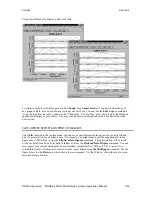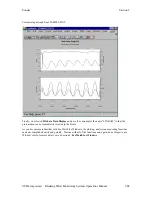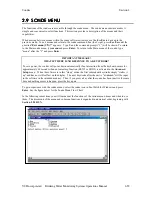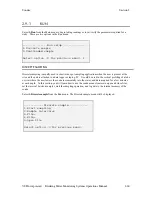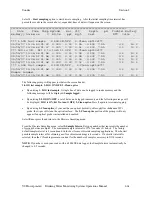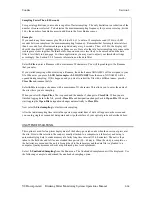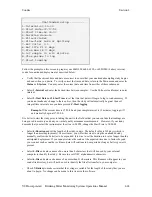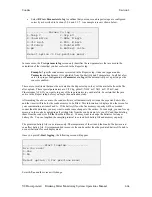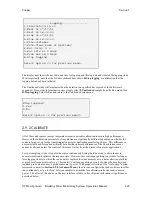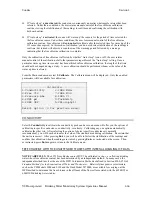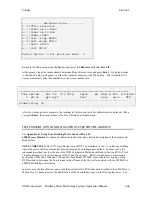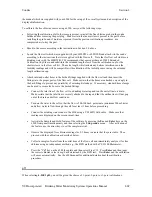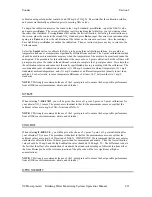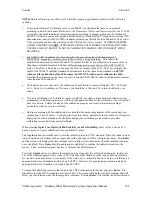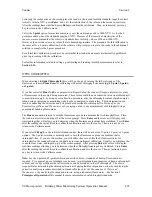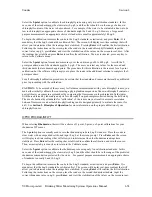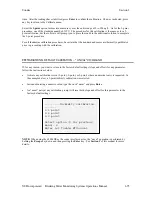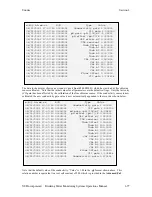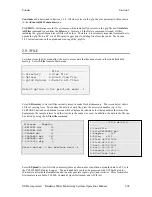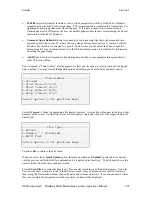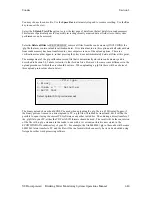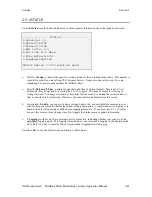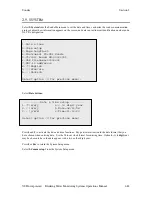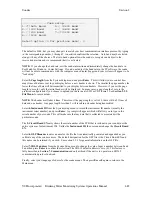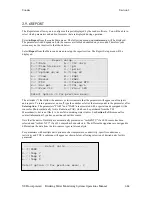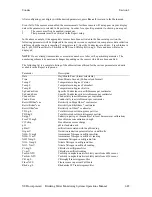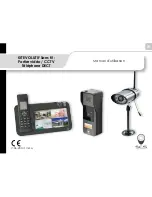
Sondes
Section
2
YSI Incorporated
Drinking Water Monitoring Systems Operations Manual
2-70
Select the
1-point
option only if you are adjusting a previous calibration. If a 2-point or 3-point calibration
has been performed previously, you can adjust the calibration by carrying out a one point calibration.
Immerse the sonde in a buffer of known pH value and press
Enter.
You will be prompted to type in the pH
value of the solution. Press
Enter
again, and the screen will display real-time readings that will allow you
to determine when the pH and temperature readings have stabilized. Pressing
Enter
will confirm the
calibration. Then, as instructed, press
Enter
again to return to the Calibrate menu. This calibration
procedure adjusts only the pH offset and leaves the previously determined slope unaltered.
Select the
2-point
option to calibrate the pH probe using only two calibration standards. In this procedure,
the pH sensor is calibrated using a pH 7 buffer and pH 4 buffer. A two point calibration procedure (as
opposed to a 3-point procedure) can save time if the pH of the media being monitored is known to be either
basic or acidic. For example, if the pH of a pond is known to vary between 5.5 and 7, a two-point
calibration with pH 7 and pH 4 buffers is appropriate. Three point calibration with an additional pH 10
buffer will not increase the accuracy of this measurement since the pH is not within this higher range.
To begin the calibration, immerse the sonde in one of the buffers and enter the actual pH value. Press
Enter
,
and
the screen will display real-time readings that will allow you to determine when the pH sensor
has stabilized. Pressing
Enter
will confirm the calibration. Following the instructions on the screen, place
the sonde in the second pH buffer, input the pH value, press
Enter
, and view the stabilization of the values
on the screen in real time. After the readings have stabilized, press
Enter
to confirm the calibration. Then,
as instructed, press
Enter
again to return to the Calibrate menu.
Select the
3-point
option to calibrate the pH probe using three calibration solutions. In this procedure, the
pH sensor is calibrated with a pH 7 buffer and two additional buffers. The 3-point calibration method
assures maximum accuracy when the pH of the media to be monitored cannot be anticipated. The
procedure for this calibration is the same as for a 2-point calibration, but the software will prompt you to
select a third pH buffer to complete the 3-point procedure.
ORP
Select
5-ISE2 ORP
to calibrate the ORP sensor. Immerse the sonde in a solution with a known oxidation
reduction potential value (we recommend Zobell solution) and press
Enter.
You will be prompted to enter
the ORP value of the solution. Press
Enter
, and monitor the stabilization of the ORP and temperature
readings. After no changes occur for approximately 30 seconds, press
Enter
to confirm the calibration.
Then, as instructed, press
Enter
again to return to the Calibrate menu.
The following calibrations are for the 6920DW sonde only. If you do not have this sonde, skip to
Section 2.9.6, Report.
AMMONIUM
When selecting
6–ISE3-NH4+,
you will be given the choice of 1-point, 2-point, or 3-point calibrations for
your ammonium (NH
4
+
) sensor.
Select the
1-point
option only if you are adjusting a previous calibration. If a 2-point or 3-point calibration
has been performed previously, you can adjust the calibration by doing a one point calibration. Immerse
the sonde in any solution of known ammonium concentration and press
Enter.
You will be prompted to
type in the NH
4
+
value (in mg/L of NH
4
-N) of the solution you are using. Press
Enter
again, and the screen
will display real-time readings that will allow you to determine when the NH4
+
readings have stabilized.
Pressing
Enter
will confirm the calibration.
Select the
2-point
option to calibrate the NH
4
+
probe using only two calibration standards that are both at
approximately the temperature of your environmental sample. In this procedure, the NH
4
+
sensor is usually

